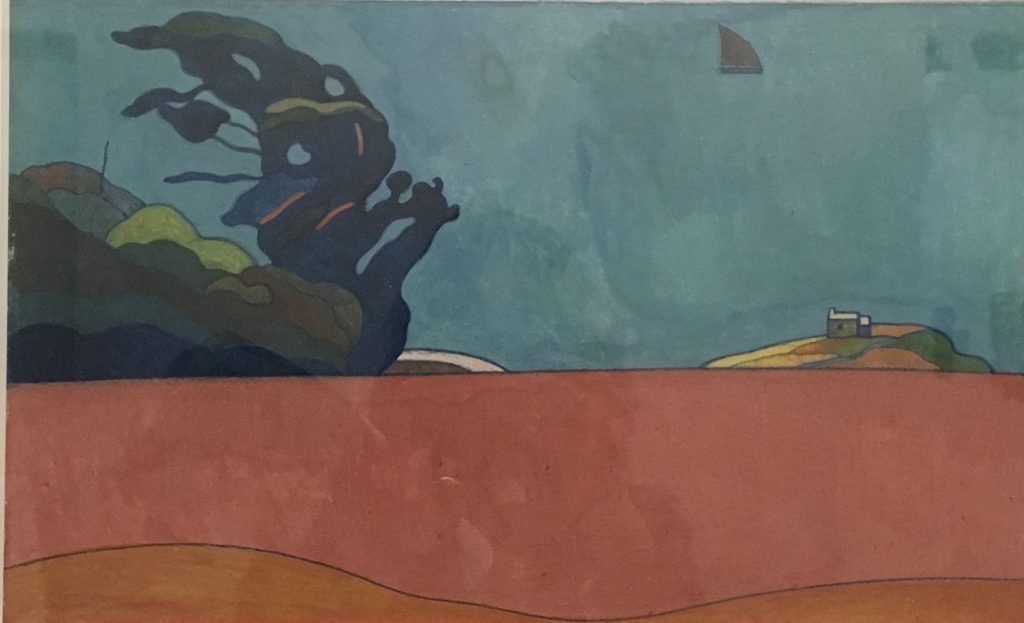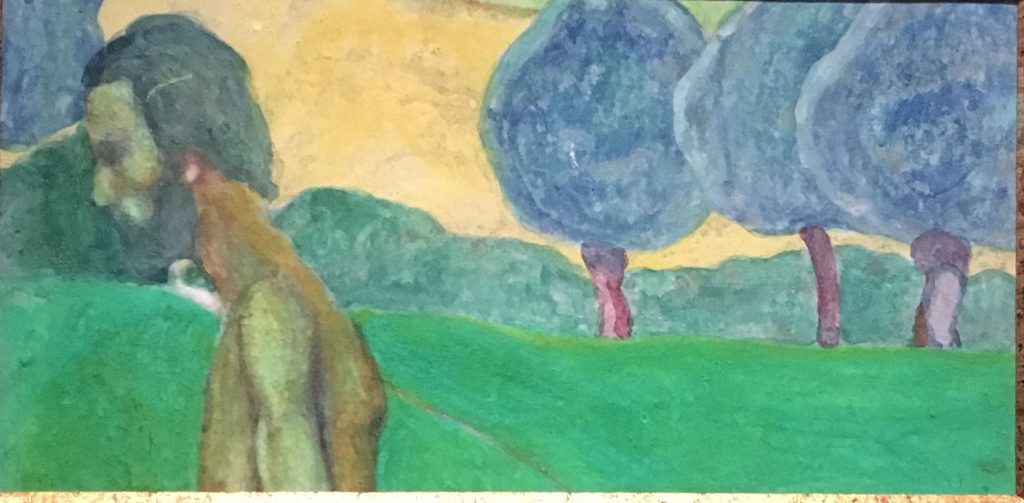
Countryside in Brittany, 1890-1891, private collection, features the back of the hamlet of Kernévenas in Pouldu
It is rare enough to find a private gallery which organises an exhibition where nothing is for sale, that one should applaud André Cariou, former curator of Musée des Beaux Arts in Quimper, for his perseverance and his hard work. Maurice Malingue, father of the actual owners, was fascinated by Charles Filiger whom André Breton had brought out in full light, and he organized an exhibition “Gauguin and friends” in the late 1940’s at galerie Kléber. This is another story of a forgotten genius who lived and died in utter poverty and is now considered as one of the leading symbolist and Nabis artists. His double fascination for religious subjects and landscapes in Brittany is beautifully illustrated at Galerie Malingue, avenue Matignon. And it opened on the eve of the 28 th Salon du Dessin which is at Palais Brongniart.

Countryside in Pouldu, ca 1895, Quimper, Musée des Beaux Arts, is influenced by Japanese etchings. The house in the distance is the custom house
Everything started with André Cariou meeting André Breton’s daughter, artist Aube Elléouët. The surrealist poet had become interested in Filiger through Alfred Jarry’s writings in 1894 in Le Mercure de France. He and Rémy de Gourmont used Filiger’s illustrations for their books. Antoine de la Rochefoucauld, a painter and collector, supported him financially with a monthly allowance.
When he realized that Gauguin had a Filiger in his bedroom in Pont Aven, Breton acquired a first work in 1949 and kept collecting them until he died. Gauguin considered him as a disciple and tried to include him in many shows recommending him to salon organizers.
Charles Filiger was born in Alsace in 1863 and goes to Pont Aven, Southern Brittany in 1888, after studying in Paris. But rapidly he disappears and hides for eight years, painting little gouaches, living in farms. He tries to enter a monastery and a mental asylum, concentrates on mystic themes.
While his first works are pointillistes, he evolves under the influence of Gauguin and becomes symbolist. One of his chefs d’oeuvre is “Sainte Famille” in which he includes all his local friends on the beach of le Pouldu, 10 miles South of Pont Aven. His St John the Baptist is equally masterful and the characters are completely familiar.
While all his friends thought he had died, Filiger kept searching for more simplicity and creates his chromatic notations, geometrical compositions around a central face. On a letter to his brother Paul in 1905, he writes: ” What I want is to give a concrete form to abstract ideas with a couple of very simple formulas”.
Surrealist poet André Breton was the first artist to rediscover him after the war and with Maurice Malingue to promote his art posthumously.
The exhibition at Galerie Malingue, 26 avenue Matignon is on until June 22. And this is also a reason to go to Quimper and Pont Aven this summer to discover more Nabis in Brittany. Salon du Dessin until Monday April 1, Palais Brongniart.
Share this Post




2 Comments on “Charles Filiger in full light at galerie Malingue”
Quel bel article ! Un grand merci Laure
BRAVO ,ET MERCI